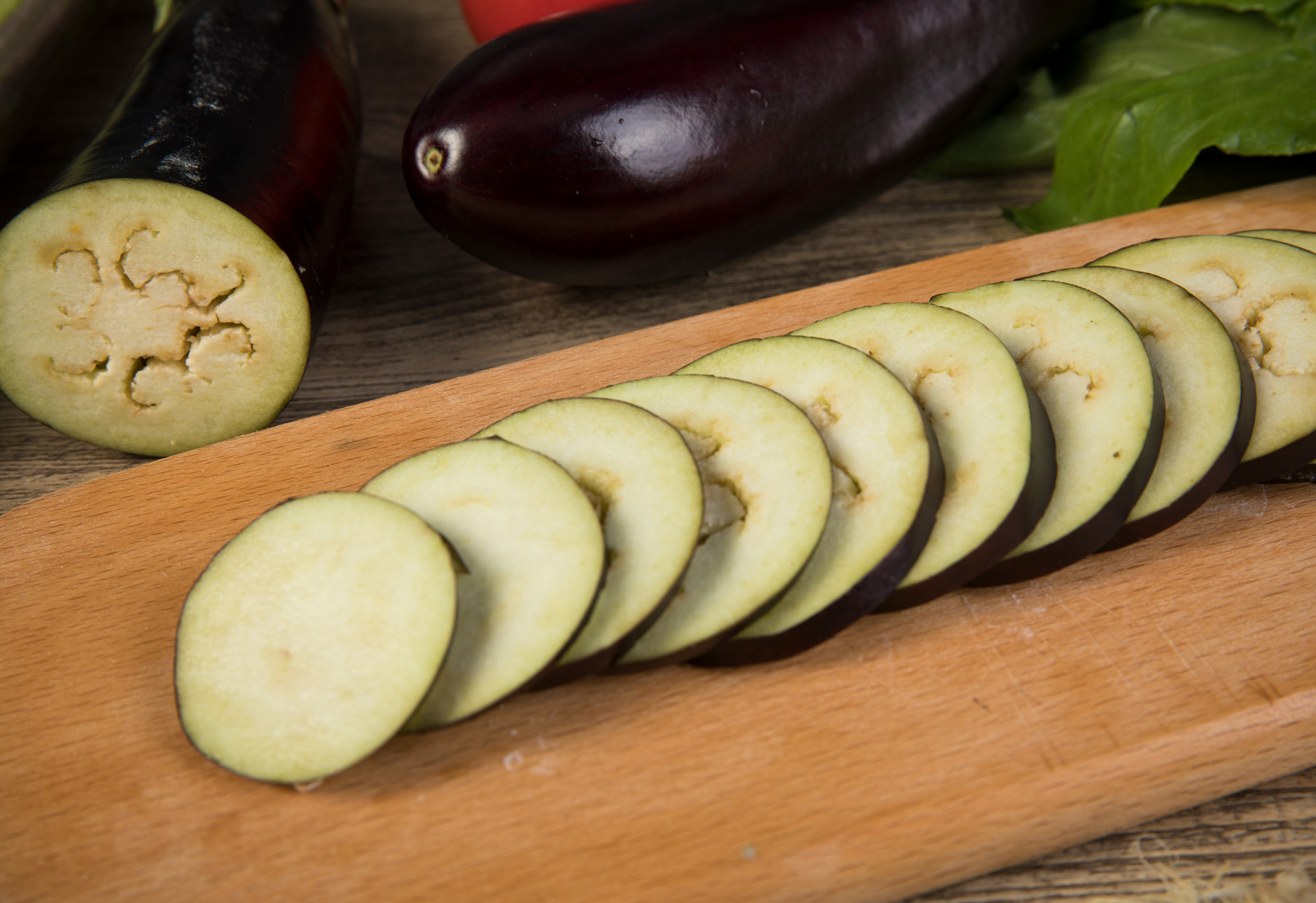Braised Eggplant with Minced Pork Recipe
Today, I'm excited to share a special dish from my personal menu—Braised Eggplant with Minced Pork! I remember that after every exam when I was a kid, my mom would make this dish to reward me. Now, I'm sharing this taste of home with you, so we can all revisit those delicious memories together!

 1 Comments
1 Comments
Braised Eggplant with Minced Pork is a classic Chinese dish that is not only visually appealing but also packed with flavor! Its history is quite long; as far back as the Northern Wei dynasty, eggplant was already being used as a cooking ingredient, and the method of braising eggplant has been passed down through generations. This dish is extremely popular as a home-cooked meal. The eggplant is cut into pieces and cooked using a braising technique, allowing it to become tender and flavorful. When paired with the sautéed minced pork, the savory aroma of the meat blends beautifully with the eggplant, creating a rich and delicious dish that pairs perfectly with rice.
1.Ingredients Needed and Substitutions
To create the perfect Braised Eggplant with Minced Pork, you will need the following ingredients:
Main Ingredients:
Eggplant: The star of the dish, providing fiber and flavor.
Minced Pork: Adds protein and enhances the dish's taste.
Seasonings:
Light Soy Sauce: Used for seasoning, adding saltiness, color, and flavor.
Flour: Coats the eggplant to enhance texture and help retain moisture.
Doubanjiang (Spicy Bean Paste): Contributes a unique fermented flavor, adding depth and aroma to the dish.
Substitutes:
Minced Pork: You can use minced chicken, beef, or plant-based meat as alternatives.
Doubanjiang: Chili sauce or sweet bean sauce can be used for seasoning.
Light Soy Sauce: Can be replaced with regular soy sauce or other seasonings.
2.What is the secret to cooking eggplant?
First, choose fresh eggplants that are firm and have a shiny skin, as these will provide better texture and flavor. Avoid older eggplants, as they tend to have a less desirable taste.

Second, once cut, eggplants can oxidize and turn black, which affects their appearance and flavor. To prevent this, soak the cut eggplant in salted water for a while before cooking. This not only prevents discoloration but also helps remove any bitterness and reduces oil absorption during cooking.
Lastly, since eggplants tend to absorb oil, it's a good idea to use a bit more oil while cooking to keep them from being greasy. Additionally, coating the eggplant with a thin layer of starch before frying can make them more tender and help reduce oil absorption.
3. Is it better to soak eggplant before cooking?
Regarding whether to soak eggplant before cooking, I personally believe that soaking can be beneficial, but it ultimately depends on the cooking method and individual taste preferences.
Generally speaking, cutting the eggplant into pieces or strips and soaking it in salted water for 5-10 minutes can help remove any bitterness and prevent the eggplant from turning black during cooking, preserving its vibrant color. This is especially useful for dishes like Braised Eggplant or Fish-Fragrant Eggplant, where maintaining the color and texture of the eggplant is important. However, if you prefer the natural taste and texture of eggplant, or if the dish you’re making doesn’t require the eggplant to retain its color, you can skip the soaking and cook it directly.
4.Tips for Success
Tips for Making Perfect Braised Eggplant with Ground Pork:
Pre-treat the Eggplant: Before cooking, cut the eggplant into pieces and salt it for about 10 minutes, then drain the excess water. This helps remove any bitterness and reduces oil splatter during cooking.

Control the Oil Temperature: When frying the eggplant, keep the oil at a medium temperature to avoid burning the outside while leaving the inside undercooked. This ensures the eggplant has a crispy exterior and remains tender inside.
Sauté the Ground Pork: Start by cooking the ground pork until it changes color and releases its fat. This ensures that the pork's flavor is fully developed and prevents excess moisture from releasing when the eggplant is added.
Balance the Seasoning: Use an appropriate amount of soy sauce, doubanjiang (fermented bean paste), and sugar to achieve a balanced flavor—avoiding it being too salty or too sweet. A bit of dark soy sauce can be added for color, enhancing the dish's visual appeal.
Slow Simmer: During the braising process, use low heat to allow the eggplant to fully absorb the flavors of the seasoning. This not only enhances the eggplant's taste but also enriches the flavor of the ground pork.
Finish with a Thick Sauce: As the dish nears completion, increase the heat to reduce the sauce, making it richer while giving the eggplant a shiny glaze.
5.Serving Suggestions
Steamed White Rice: The sauce from Braised Eggplant with Ground Pork is incredibly flavorful and pairs perfectly with a bowl of hot steamed rice.
Stir-Fried Vegetables: To balance the rich flavors, consider serving with light stir-fried vegetables like broccoli or garlic spinach. This not only adds dietary fiber but also helps cut through the richness of the dish.
Hot and Sour Soup: If you find the flavors of the Braised Eggplant with Ground Pork to be a bit heavy, a refreshing bowl of hot and sour soup can provide a nice contrast and cleanse the palate.
Serving Suggestions:
Moderation: While Braised Eggplant with Ground Pork is delicious, eggplant tends to absorb oil, so it's best to enjoy it in moderation to avoid excessive oil intake.
Varied Pairings: For a balanced diet, consider pairing this dish with other options like braised pork or steamed fish, allowing you to enjoy a variety of flavors and nutrients.
Adjust Seasoning: Feel free to adjust the salt and sugar levels to suit your personal taste, ensuring the dish isn’t too salty or sweet.
6.How to store and heat
Storage:
Refrigeration: Place any leftover Braised Eggplant with Ground Pork in a sealed container or food storage bag and store it in the refrigerator. It’s best to consume it within 1-2 days for optimal flavor and texture.
Freezing: For longer storage, transfer the dish to a freezer-safe container or bag, making sure to remove excess air. It can be frozen for about 1-2 months.
Reheating:
From Freezer: When ready to eat, remove the dish from the freezer and let it thaw. You can reheat it in the microwave, a skillet, or an oven, ensuring it is heated through evenly.
From Refrigerator: If stored in the fridge, you can reheat the dish directly in a pan over medium heat. Stir occasionally until it is thoroughly heated.
Reheating Suggestions:
Avoid reheating multiple times to prevent spoilage. When reheating, consider adding a small amount of water or broth to enhance the flavor, and be careful not to overheat, as this can affect the texture.
7.More Delicious Recipe Recommendations:
Delicious Fish Fragrant Eggplant
Braised Eggplant (Hong Shao Qiezi)
Here's a detailed step-by-step tutorial for making Braised Eggplant with Ground Pork. Give it a try!
If you enjoy our recipes, feel free to subscribe to our official newsletter for more quality content!
INGREDIENTS
MAIN INGREDIENTS
- 500g eggplant
- 400g ground pork
ACCESSORIES
- 40g light soy sauce
- 60g all-purpose flour
- 20g doubanjiang (spicy bean paste)
- 2g salt
DIRECTIONS
STEP 1
Cut the eggplant into 1-inch long strips.

STEP 2
Sprinkle with a little salt and toss to draw out moisture.

STEP 3
Squeeze out the excess water and coat the eggplant strips with flour.

STEP 4
Heat oil in a pan until hot (about 350°F/175°C), then fry the eggplant until golden brown. Remove and set aside.

STEP 5
In a clean pan, add a little oil and sauté the ground pork until cooked through and no longer pink. Add soy sauce and mix well.

STEP 6
Stir in the doubanjiang (fermented bean paste) and cook until well combined.

STEP 7
Add the fried eggplant and toss everything together. Your dish is ready to serve!

Frequently Asked Questions:
1.What’s the Best Cooking Method for Eggplant?
Eggplant can be prepared in many ways, and the best method depends on your personal taste:
Steaming: If you prefer a lighter flavor, steaming eggplant is a great option. Cut the eggplant into chunks or strips, steam until tender, and drizzle with sauce for a soft, healthy dish.
Braised: For a richer flavor, braising is an excellent choice. In dishes like braised eggplant with ground pork, the eggplant absorbs the sauce during cooking, resulting in a deep, savory taste.
Frying: Fried eggplant can be a fun option. Cut it into strips, coat in batter, and fry until golden brown for a crispy exterior and soft interior. You can make dishes like salt and pepper eggplant.
Roasting: For roasted eggplant, score the skin, brush with oil, and add your favorite seasonings before roasting. This method brings out a unique charred flavor, showcasing the versatility of eggplant. Each cooking method has its own charm!
2.Can Eggplant Be Overcooked?
In my opinion, eggplant should not be overcooked for several reasons:
Texture Change: Overcooked eggplant can become too mushy, losing its unique firmness and chewiness, which negatively affects the overall eating experience.
Nutrient Loss: Prolonged cooking can lead to the loss of some vitamins and minerals in eggplant, especially water-soluble vitamins like vitamin C.
Flavor Diminution: Overcooking can dilute the eggplant's natural flavor, preventing it from showcasing its deliciousness.
Cooking Tips:
Time Control: When cooking eggplant, keep an eye on the cooking time. Typically, you should cook it over medium heat until it becomes tender.
Monitor Texture: You can check the doneness by gently pressing on the eggplant. If it feels soft yet still has some bounce, it’s ideally cooked.
Seasoning Consideration: Adding salt and other seasonings while cooking can help the eggplant absorb flavors better during the process.
3.How to Prevent Eggplant from Absorbing Too Much Oil During Cooking?
Eggplant has a high water content, making it prone to absorbing oil. To reduce oil absorption, you can sprinkle a bit of salt on the cut eggplant and let it sit for about 10 minutes to draw out excess moisture. Additionally, before frying, lightly coat the surface of the eggplant with a thin layer of cornstarch. This creates a protective layer that helps minimize oil absorption.
4.How to Control the Thickness of Braising Sauce?
The thickness of the braising sauce is crucial for making the eggplant dish. If the sauce is too thick, you can dilute it with a little water or broth. Conversely, if the sauce is too thin, you can thicken it by adding a slurry made from cornstarch and water to achieve a richer consistency.
5.How to Make Eggplant More Flavorful and Better Absorb the Braising Sauce?
To enhance the flavor of eggplant and improve its ability to absorb the braising sauce, try tossing the cut eggplant with salt and letting it marinate for a while before frying. This process will help draw out moisture and remove any bitterness. Once you fry the eggplant, it will have a drier surface, making it more receptive to soaking up the braising sauce.
Recipe analyzer
- Recipes: Braised Eggplant with Minced Pork Recipe
- Main Ingredients:2
- Servings per recipe:1
- Servings size:900 g
-
Energy (calories):1313 kcal
-
Protein:107.66 g
-
Fat:83.98 g
Why gray?

-
Carbohydrates:29.4 g
-
Protein: 34%451 kcal
-
Fat: 58%757 kcal
-
Carbohydrates: 8%105 kcal

The ratio shows whether the proportion of both fatty acids in your diet is optimal. Red color means too much of Omega 6 or too little of Omega 3. The data are rounded off and approximate.











1 REVIEWS